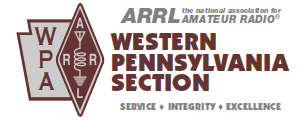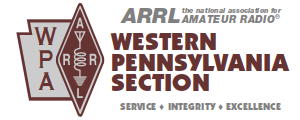ARRL WPA Section Convention – June 1 & 2 at Breeze Shooters Hamfest, Butler
Our 2019 ARRL WPA Section Convention will be held on Saturday June 1st and Sunday June 2nd at the Breezeshooters Hamfest on the Big Butler Fairgrounds. Besides our ARRL Exhibit in the main hall, we will host a number of interesting and informative forums.
On Saturday, the Forums are scheduled to begin at 10:00 am Saturday and 9:00 am Sunday.
Saturday ARRL Forums (June 1st)
- 10:00 am – ARRL Update by Atlantic Division Director Tom Abernethy W3TOM
- 11:00 am – Getting Started with ARES Connect. Learn how to register and log in, how to sign up for an event, net or other activity, and how to get credit for your participation. Also tips on managing your ARES Member profile, add or change your photo, and update your course completions online.
- 1:00 pm – Getting Started with DMR. Radios, hotspots, registering to obtain your own DMR network ID, talk groups, Q&A.
- 2:00 pm – Raspberry Pi Projects, with WPA Youth Coordinator Bruce Gibson K3BEG
- 3:00 pm – Planning Committee meeting for the KDKA 100th Anniversary special event (Club Representatives and Committee Members)
Sunday ARRL Forums (June 2)
- 9:00 am – ARES Connect Administration for Emergency Coordinators. Adding one-time and repeating events, nets and meetings. Approving ARES Members. Crediting member service. Setting up activity Check-in “Kiosks”
- 10:00 am – Amateur Radio Messaging and Traffic. Learn how to handle ARRL Radiograms, ICS-213 and other formats for third party traffic. Procedures and protocols, voice and digital messaging nets and times. Starting local traffic training nets.
- 11:00 am – DMR Administration. Developing code plugs. How to add DMR to an existing repeater, Equipment discussions. Best Practices for hot spot configurations.
For more information please visit:
https://www.breezeshooters.org/html/our_hamfest-2019.htm
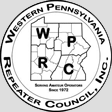
Western Pennsylvania Repeater Council Approves ARRL WPA Request For Temporary Portable Repeaters
In response to our inquiry, we received a suggestion by the Western Pennsylvania Repeater Council that the WPA Section petition for a 70 cm Repeater pair to be designated as “Shared, Non-Protected” (SNP) for use by WPA ARES section-wide by temporary repeaters during disasters, training exercises and public service events.
At the WPRC Meeting on Sunday, April 28 in Meadville, WPRC approved our request to modify the WPA Bandplan to indicate the frequency pair of 441.550/446.550 for use an SNP repeater pair for temporary portable and mobile repeaters for Public Service and Emergency communications and training. Additionally, the 2 meter frequency 145.550 was suggested as an alternate or mobile cross-band frequency for use with such repeaters.
We recommend the use of this repeater pair for present and future portable and mobile repeaters to be deployed in support of Public Service events. We suggest standardizing on the CTCSS “PL™” tone of 100.0 Hz for these repeaters. We encourage groups who can afford it in each District to work together to build one of these repeaters and make it available for Public Service events and activities, drills and emergencies in their District.
We thank the WPRC for their assistance and cooperation.

ARES EC Monthly Reports To Continue on PDF Forms
QST QST QST – ECs and DECs should continue to report as usual. We will transition over to reporting through ARES Connect later during 2019.
Here are some FAQs we have received:
Q – Do you need to be an ARRL member to sign up for ARES Connect?
A – No, participation in ARES, and ARES Connect, does not require ARRL membership.
Q – Are ARES Connect registrations replacing FSD 98 applications?
A – Yes, the current form FSD 98 will be phased out in 2019. ARES Connect allows admins to generate reports, in the form of spreadsheets, to compile reports as they see fit and in real time.
Q – It would make sense for each ARES member to complete their own profile and update it as changes warrant. Is this correct or is this something I as EC must do?
A – Users can edit their profile at any time. Individual volunteers should create and manage their own ARES Connect accounts. An EC should only create and manage an account for volunteers who make it clear they do not want to.
Q – As EC, why don’t I have permission to edit my county ARES members.
A – At this time permission to edit users is given to section level admins and above. If you need to make a change to a user account, contact your SEC or SM. We will be reviewing this policy which has implications of a security nature and determine how we might return the ability for ECs to edit users.
Import links to remember
Make sure you are using the correct link when creating an account and inform your ECs. Using the wrong link to create an account means the user will not be seen by admins in their section. You can access your section’s landing page by going to one of these links:
https://vhub.at/aresconnect-wpa
https://arrl.volunteerhub.com/lp/wpa
When creating an event, make sure you place the event under the appropriate category heading: Communications Emergency, Community Event, SKYWARN, Exercise, Training, Meeting, or Net. If you have questions, please refer to the online instructions
User names – All users should only use their Amateur Radio call sign as their user name.
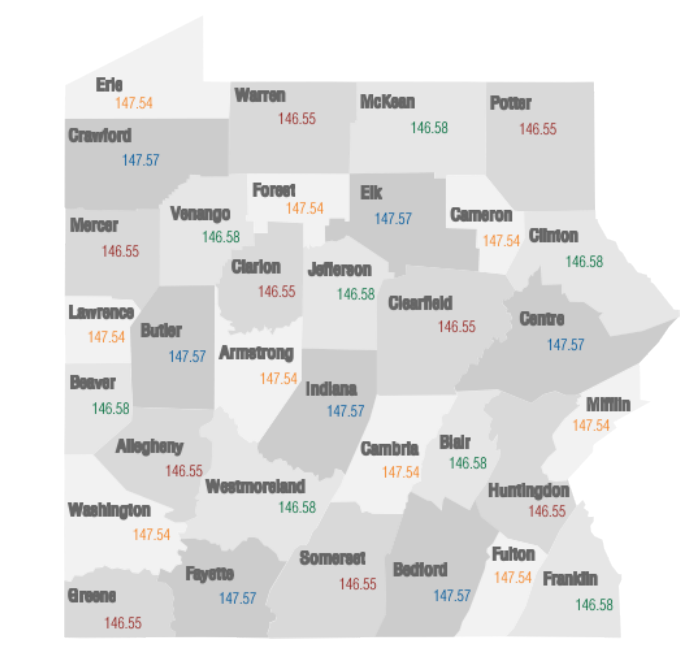
New ARES Simplex Frequency Plan Approved!
At the February 9th WPA Cabinet Meeting, the proposed WPA ARES Simplex Frequency Plan was unanimously approved. This new suggested frequency plan improves our use of scarce frequencies, and greatly enhances ARESMAT (mutual aid) operations, by ensuring that every radio has every frequency pre-programmed into it for the entire section!
Four simplex frequencies were chosen to meet the following criteria:
- specified as Simplex Channels in the WPRC 2-meter Band Plan\
- at least 30 kHz separation from each other
- at least 30 kHz separation from any repeater input or output frequency (as specified in the WPRC Band Plan)
- at least 30 kHz separation from the 146.52 MHz National Calling Frequency
Additionally, they were chosen to align on 30 kHz-spaced channels to facilitate their availability on older radios, including ancient crystal-controlled radios and 1970s-vintage synthesized rigs. The result provides maximum compatibility with 90% or more of all radios that might be pressed into service.
Here are the counties and recommended frequencies:
146.55 “TAC-5”
Allegheny, Clarion, Clearfield,
Greene, Huntingdon, Mercer, Potter, Somerset, Warren
146.58 “TAC-8”
Beaver, Blair, Clinton, Franklin,
Jefferson, McKean, Venango, Westmoreland
147.54 “TAC-4”
Armstrong, Cambria, Cameron,
Erie, Fayette, Forest, Fulton, Lawrence, Mifflin
147.57 “TAC-7”
Bedford, Butler, Centre,
Crawford, Elk, Indiana, Washington
ARESMAT (mutual aid) operations will be greatly simplified by programming all four of these frequencies into every radio used by ARES members. This plan enables every radio to be used in every county in the WPA Section without the need for any re-programming in the field.
This Plan was shared with all DECs and ECs for comments in late October 2018. It was also shared with the Western Pennsylvania Repeater Council for comments and suggestions. We gratefully acknowledge their suggestions, which bring it into conformance with the ARRL and WPRC bandplans, and the current operating practice on 2 meters throughout our entire Section.
Additionally, three extra frequencies were selected for use as extra or alternate frequencies in each district as follows:
145.51 “ALT-1” Northeast District (N2)
145.53 “ALT-3” Southwest District (S1)
145.59 “ALT-9” Northwest District (N1) and Southeast District (S2)
Including both 2-meter and 70 cm calling frequencies gives us 9 channels, with the channel number being the last digit of the frequency:
| Channel # | Channel Name | Frequency |
| 1 | ALT-1 | 145.51 MHz |
| 2 | CALL-2 | 146.52 MHz |
| 3 | ALT-3 | 145.53 MHz |
| 4 | TAC-4 | 147.54 MHz |
| 5 | TAC-5 | 146.55 MHz |
| 6 | CALL-446 | 446 MHz |
| 7 | TAC-7 | 147.57 MHz |
| 8 | TAC-8 | 146.58 MHz |
| 9 | ALT-9 | 145.59 MHz |
(Hint: This would make a good “Zone” to include in your codeplugs. I call the zone “WPA ARES FM” in my codeplugs.)
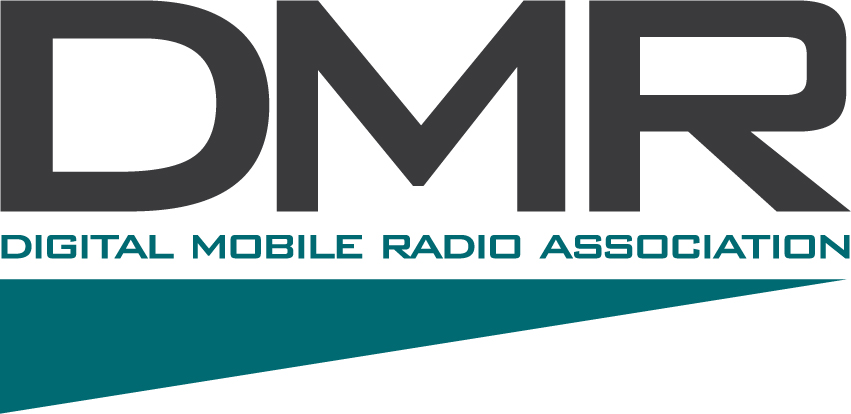
Digital Mobile Radio Making Progress in WPA
When the FCC moved to make DMR legal for Amateur Radio use in 2014, it stimulated a lot of interest in the commercial radio mode (also known as “MOTO TRBO” by Motorola). As an open standard, DMR is picking up momentum as new models of radios by new manufacturers are starting to flood the market. Many of the big names are FCC type accepted for Part 90 (Business band) and Part 95 (CB, including GMRS and MURS), but before buying that super-bargain priced radio, make sure it is legal to be purchased in the US.
As of this writing, there are over 100 amateur repeaters in Pennsylvania that support DMR. Only 19 of them are on the air in our WPA Section, though. For well under $100, you can buy the parts to assemble a DMR “Hotspot” (or purchase a ready-made one) which uses your Internet connection to link your radio to the global DMR Networks.
If you and a buddy both have DMR radios, you can also use TalkGroup 99 on 145.79, 441.00; also on 145.61, 145.63, and 145.65 MHz. Please do not use DMR on 145.51, even though the Internet says you “should.” In our WPA Section, our Repeater Council Band Plan has 145.51-.59 assigned as FM Simplex frequencies, and our WPA ARES Plan is in total alignment and agreement with the WPRC existing bandplan!
Due to the low price of the equipment, it is relatively easy and inexpensive to add DMR capability to almost any existing amateur radio repeater. Due to the currently small (but growing) number of DMR repeaters in WPA, activity is not as intense as it is elsewhere, like Eastern PA, Ohio and the whole eastern seaboard!
But, we do have a “Western PA” talkgroup number: 31422. There has been some talk of a regularly scheduled net, which sounds like a great idea! One suggestion is at 7:30 on Wednesday evenings, but let’s not carve that in stone, just yet!
Meanwhile, if you have a DMR radio, please make sure you have 31422 in a place of honor in each of your codeplugs and as a “Static Group” in your Hotspot, and please make a habit of using it on a regular basis.
Our WPA Section is encouraging all DMR Repeater owners in our Section to consider “nailing it up” as a Static Group on your DMR Repeaters, thus making it very easy to carry on relevant QSOs with our neighbors in our Section!
I monitor 31422 as much as I can, and I hope to see you there very soon.
73 and Press On!
Joe Shupienis W3BC
Western Pennsylvania Section Manager
ARRL – the national association for Amateur Radio®
814-371-3235 wireline
814-771-3804 wireless
w3bc@arrl.org
DMR: 3142453
PO Box 73
Falls Creek, PA 15840
![]()
